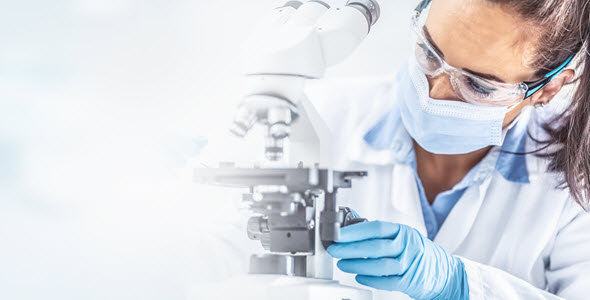By the bioMérieux Connection editors
This week is Medical Laboratory Professionals Week, which aims to honor and celebrate the members of the healthcare community whose work is vital, but often goes unseen. Clinical laboratory professionals were referred to as the “invisible workforce” in a December 2020 New York Times article.
“Doctors and nurses are very visible, but we work behind the scenes,” Marissa Larson, a medical laboratory scientist supervisor at the University of Kansas Health System told the Times.
The “behind-the-scenes” work that Larson is referring to includes preparing, running, processing, and reporting over 13 billion lab tests each year, which drive two-thirds of medical decisions. Without lab professionals, diagnostics, and tests, doctors would essentially be flying blind when it comes to diagnosing and treating patients.
“We’re accustomed to holding things up in the background. We enjoy doing it because we know we’re helping people,” said Natalie Williams-Bouyer, the director of the division of clinical microbiology at the University of Texas Medical Branch in Galveston.
But, what happens when the desire to help save lives encroaches on your personal life? This work-life-balance struggle is something that many laboratory professionals have endured over the past year as the world tackles the COVID-19 pandemic.
The Pandemic Is Exacerbating an Already-Existing Issue
It is estimated that there are only 337,800 active medical laboratory professionals in the United States, serving a population of just over 330 million people. If you think that this doesn’t sound like enough lab professionals, you’d be correct—the demand for these professionals is expected to grow by 25,000 between 2019 and 2029.
What this means is that there is a lot of work to go around, and not enough skilled, educated people to get the job done. A survey conducted in late 2018 and published in the American Journal of Clinical Pathology found that although medical lab professionals found their work rewarding and meaningful, the quantity of workload and understaffing were the main contributing factors to job stress, burnout, and work-life balance issues. Overall, 85% of survey respondents reported having felt burnout in some point in their career as a laboratory professional.
This survey was undertaken two years beforethe pandemic, which has only exacerbated workload. Clinical laboratory professionals have had to adapt to an unprecedented number of COVID-19 tests, while still maintaining their regular workflows, because other infectious diseases and conditions remain prevalent.
“There is always more work to be done than the hours to do it in,” Dr. April Abbott, director of microbiology at Deaconess Hospital in Evansville, Indiana told the Times. “There is always this undercurrent of, it’s never good enough. It’s devastating. We’re working as hard as we can.”
The Critical Need for Medical Laboratory Professionals
While the demand for technologists and other lab professionals has increased in recent years, especially since March 2020, the number of training programs that build lab skills has dropped. Training programs available in the U.S. decreased 7% since 2000, and in some states, there are no programs at all. Unfortunately, the pandemic has contributed even further to the lack of growth in the field.
“When the pandemic hit, medical laboratory science programs for MLSs and MLTs (medical lab scientists and medical lab technicians) faced a number of difficulties,” said Patricia A. Tanabe, executive director of the American Society of Clinical Pathology (ASCP) Board of Certification. “Many of the students were not able to complete their clinical rotations within hospital laboratories and were unable to utilize student laboratories on campus as all classes had to switch to distance learning. In addition, universities and colleges are unable to do the ‘live’ recruitment they normally do to recruit students into the program or their college.”
To help combat the low number of clinical lab professionals, organizations such as The American Society for Clinical Laboratory Science (ASCLS) are calling for expansion of the Title VII health professions program, which provides education and training opportunities in high-demand disciplines, to include medical laboratory science. The ASCLS also engages in community outreach and partners with school STEM programs to improve the visibility of the profession.
Support Medical Laboratory Professionals Week
While the pandemic has led to burnout for many lab professionals and potentially contributed to even more shortages, Tanabe hopes it has brought awareness to the role of the laboratory and may create more interest in the profession in the long-term. One main takeaway from the last year is that clinical lab professionals need our support and appreciation now more than ever.
To show our gratitude for clinical laboratory professionals, bioMérieux is offering a complimentary live webinar (April 22) and numerous on-demand webinars on a variety of topics. Many states require laboratory professionals to acquire a specific amount of Continuing Education credits each year—there is an opportunity for P.A.C.E.® credits after watching each webinar! Click here to access the webinars.
Opinions expressed in this article are not necessarily those of bioMérieux, Inc.




The problem is that there’s not enough training facilities like school where my daughter went. She finished the 4 year course but the does not provide training should she stocked on just doing a regular microbiology work than being a Clinical laboratory scientist.